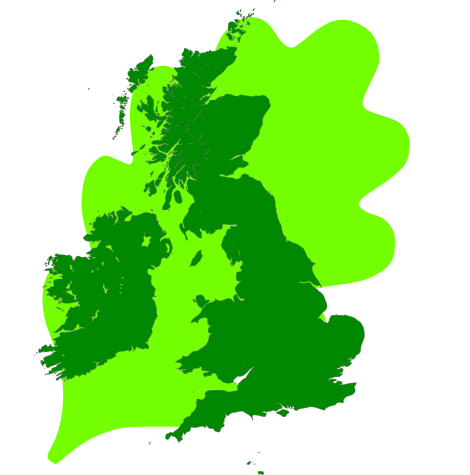Hadrian's Wall, Northumberland
Hadrian's Wall is a former Roman defensive fortification and frontier in Northumberland. Around AD 122 during Emperor Hadrian ordered that a wall be built to act as a defence tool at the northernmost limits of the Roman province of Britannia. It is thought to have taken three legions of infantrymen from the army of Britain around six years to complete the Wall. Each legion was around 5,000 men strong. It took at least six years to build and reached a height of 20 feet in some places. There were more than 80 milecastles or forts, two observation towers and 17 larger forts at its peak. Alongside the remains of the wall itself there are ditches, forts, fortresses, watchtowers and civilian settlements. It is within the council area of Northumberland. More...
Historic England Scheduled Monument 1010962.
Place Type: Roman Remains
Historic County: Northumberland
Lat, Long: 55.032365,-2.2506002
Grid Reference: NY840709
Police Area: Northumbria
Council Area: Northumberland
Civil Parish: Newbrough CP
Country: England
GBPNID: 302238
Entry Type: Main listing (P)
URL: https://gazetteer.org.uk/place/Hadrian's_Wall,_Northumberland_302238
 Peruse Northumberland on Wikishire
Peruse Northumberland on Wikishire
The continuous defensive barrier guarded the north-western frontier of the province of Britain from invaders. It runs 73 miles from Wallsend in Northumberland in the east to Bowness-on-Solway in Cumberland in the west. Soldiers were garrisoned along the line of the wall in large forts, in smaller milecastles and intervening turrets. Throughout the length of the wall there was a watch-tower every third of a mile, which also provided shelter and living accommodation for the Roman troops. Just south of the wall there is a ten foot deep ditch-like construction, with two parallel mounds running north and south of it, known as the Vallum. The Vallum and the wall run more or less in parallel for almost the entire length of the wall.
The Wall seen today is only around 10% of the original. Once the Romans left Britain, much of the wall fell into decay and over the course of the intervening centuries stone has been removed, buried or destroyed. Hadrian's Wall also marked the boundary between Roman Britannia and unconquered Caledonia to the north. The wall lies entirely within England and has never formed the Anglo-Scottish border, though it is sometimes loosely or colloquially described as being such.
It is one of the most famous of all the frontiers of the Roman empire and was made a UNESCO World Heritage Site in 1987.
Historic England Scheduled Monument 1010962.
Place Type: Roman Remains
Historic County: Northumberland
Lat, Long: 55.032365,-2.2506002
Grid Reference: NY840709
Police Area: Northumbria
Council Area: Northumberland
Civil Parish: Newbrough CP
Country: England
GBPNID: 302238
Entry Type: Main listing (P)
URL: https://gazetteer.org.uk/place/Hadrian's_Wall,_Northumberland_302238
 Peruse Northumberland on Wikishire
Peruse Northumberland on WikishireThe continuous defensive barrier guarded the north-western frontier of the province of Britain from invaders. It runs 73 miles from Wallsend in Northumberland in the east to Bowness-on-Solway in Cumberland in the west. Soldiers were garrisoned along the line of the wall in large forts, in smaller milecastles and intervening turrets. Throughout the length of the wall there was a watch-tower every third of a mile, which also provided shelter and living accommodation for the Roman troops. Just south of the wall there is a ten foot deep ditch-like construction, with two parallel mounds running north and south of it, known as the Vallum. The Vallum and the wall run more or less in parallel for almost the entire length of the wall.
The Wall seen today is only around 10% of the original. Once the Romans left Britain, much of the wall fell into decay and over the course of the intervening centuries stone has been removed, buried or destroyed. Hadrian's Wall also marked the boundary between Roman Britannia and unconquered Caledonia to the north. The wall lies entirely within England and has never formed the Anglo-Scottish border, though it is sometimes loosely or colloquially described as being such.
It is one of the most famous of all the frontiers of the Roman empire and was made a UNESCO World Heritage Site in 1987.


 Menu
Menu